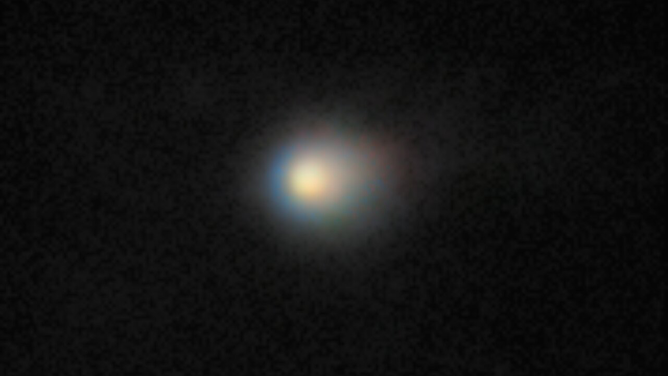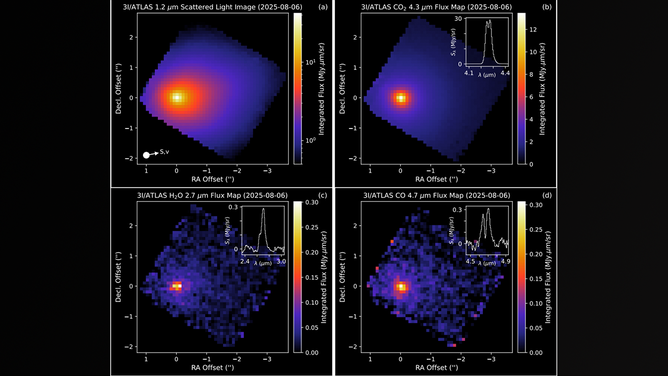James Webb Space Telescope reveals 'unusual' chemical makeup of interstellar comet 3I/ATLAS
James Webb Space Telescope data revealed the object’s coma is dominated with carbon dioxide, and the mixing ratio with water is the "highest ever observed in a comet." What does this mean? The research group offered a few possible scenarios for this chemical makeup of the interstellar comet.
NASA astronaut photographs comet shooting by Earth from space station
FILE: NASA Astronaut Matthew Dominick recorded this video of Comet Tsuchinshan-ATLAS just above the horizon as the Northern lights danced above Earth. The beautiful video was taken from about 200 miles above Earth from the International Space Station.
Scientists are trying to learn as much as they can about our third ever discovered interstellar visitor, 3I/ATLAS, and the latest clues about the comet revealed that it's a bit of an oddball – at least chemically.
Comet 3I/ATLAS was first spotted on July 1 by the NASA-funded Asteroid Terrestrial-impact Last Alert System (ATLAS) in Chile. Only two previous interstellar objects have been tracked and documented through our solar system, Oumuamua in 2017 and 2I/Borisov in 2019, but now astronomers have new tools, including the James Webb Space Telescope.

Comet 3I/ATLAS is captured in this image by the Gemini North telescope. The incredible sensitivity of Gemini North's Multi-Object Spectrograph (GMOS-N) reveals the comet’s compact coma — a cloud of gas and dust surrounding its icy nucleus.
(International Gemini Observatory/NOIRLab/NSF/AURA/K. Meech (IfA/U. Hawaii) Image Processing: Jen Miller & Mahdi Zamani (NSF NOIRLab) / FOX Weather)
A group of international researchers used Webb's NIRSpec instrument to study the infrared spectroscopy of 3I/ATLAS and found something interesting in the vapor cloud surrounding its core, known as a coma.
ASTRONOMERS SPOT RARE INTERSTELLAR COMET SPEEDING THROUGH SOLAR SYSTEM
According to the draft research paper, JWST NIRSpec data revealed the object’s coma is dominated by carbon dioxide, and its 8-to-1 mixing ratio with water is the "highest ever observed in a comet."

Spectral data for 3I/ATLAS observed using JWST’s NIRSpec.
(NASA)
It is 16 times greater than expected for an object this far from the Sun, according to the researchers.
What does this mean? The research group offered a few possible scenarios for this chemical makeup.
NEW IMAGES RELEASED OF ‘INTERSTELLAR WANDERER’ ZOOMING THROUGH OUR SOLAR SYSTEM
The group said this may indicate 3I/ATLAS contains ices exposed to higher levels of radiation than other comets, or that it formed close to the carbon dioxide ice line of the rotating disc of gas and dust from its parent star.
Additional observations by JWST and the new National Science Foundation’s Vera C. Rubin Observatory in Chile could help confirm whether 3I/ATLAS is as unusual as it appears.
According to NASA, 3I/ATLAS isn't a threat to Earth and should remain visible through ground-based telescopes through September before it's too close to the Sun to observe. Once it pops back out on the other side of the Sun in December, observations can resume.
